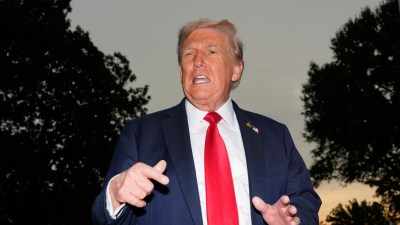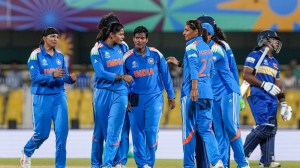‘Cops had choices, but they always went for the red and white rumals’
While the Delhi Police is now wary of draping the red and white Arbi rumals on criminals, shopkeepers in Nizamuddin who sell these scarves say the police had an array of designs and colours to choose from — but they always preferred red and white.

While the Delhi Police is now wary of draping the red and white Arbi rumals on criminals, shopkeepers in Nizamuddin who sell these scarves say the police had an array of designs and colours to choose from — but they always preferred red and white.
Muslims in the country were outraged when they saw the police use the bright red and white Arbi rumals, — typical of a religious ‘Muslim look’ — to cover the faces of terror suspects Saqib Nisar, Mohd Shakeel and Zia Ur Rehman while producing them in court in September.
While the police claimed it was mere coincidence, Muslim overtones were hard to miss. At Nizammudin, one of the largest wholesale markets of Arabic scarves, these are found in several designs and colours, like green, brown and orange.
The Indian Express had earlier reported that the brand new red and white scarves used on the arrested terror suspects were bought from the Nizamuddin market. The move, interpreted as one that deliberately underlined the faith of the suspects, created a deep sense of unease and hostility among Muslims. Azamgarh MP Akbar Ahmad Dumpy even turned up in Parliament wearing a similar scarf in protest.
In Jamia Nagar, the site of the September 19 encounter that killed two suspected militants and a police officer, residents have concluded that the police were out to victimise the community.
While the late Palestinian leader, Yasser Arafat, made famous the black and white Arabic scarf, now known as the ‘Arafati’, red and white is the most representative colour of Indian Muslims. The scarf is worn while offering namaz or during travel. It is worn in Saudi Arabia by commoners and is often an accessory carried by Muslims after they complete Haj.
“In India, men mostly prefer the red and white scarves. People in Saudi Arabia usually go for the white ones with white embroidery, while Palestinians prefer the ‘Arafati’. Policemen often come to this market to buy the red and white scarves,” said a wholesale dealer in Nizamuddin.
Besides Nizamuddin, these scarves are sold in wholesale and Jama Masjid’s Meena Bazaar, from where they are sent to all parts of the country. The scarves are also retailed by shopkeepers, but only in Muslim-dominated areas. The market in India is big — though the clientele is limited to Muslims, and recently, the Delhi Police. Scarves of Saudi Arabian origin, priced at Rs 200 each, are the most expensive, while the Chinese also produce these for Rs 100 to 150 each. The cheapest ones, priced at Rs 70, are manufactured in the Barabanki district of Uttar Pradesh.
“Clearly, the police were sending out a message when they bought these scarves,” said a dealer.
Jamia Nagar resident Asif Mohammad Khan even visited Nizammudin and matched the make of the scarves with that in the photographs published in newspapers. “These are the scarves most use. The police’s move heightened tension in Jamia Nagar. Many of us feel we cannot trust the police any more.”



- 01
- 02
- 03
- 04
- 05



























